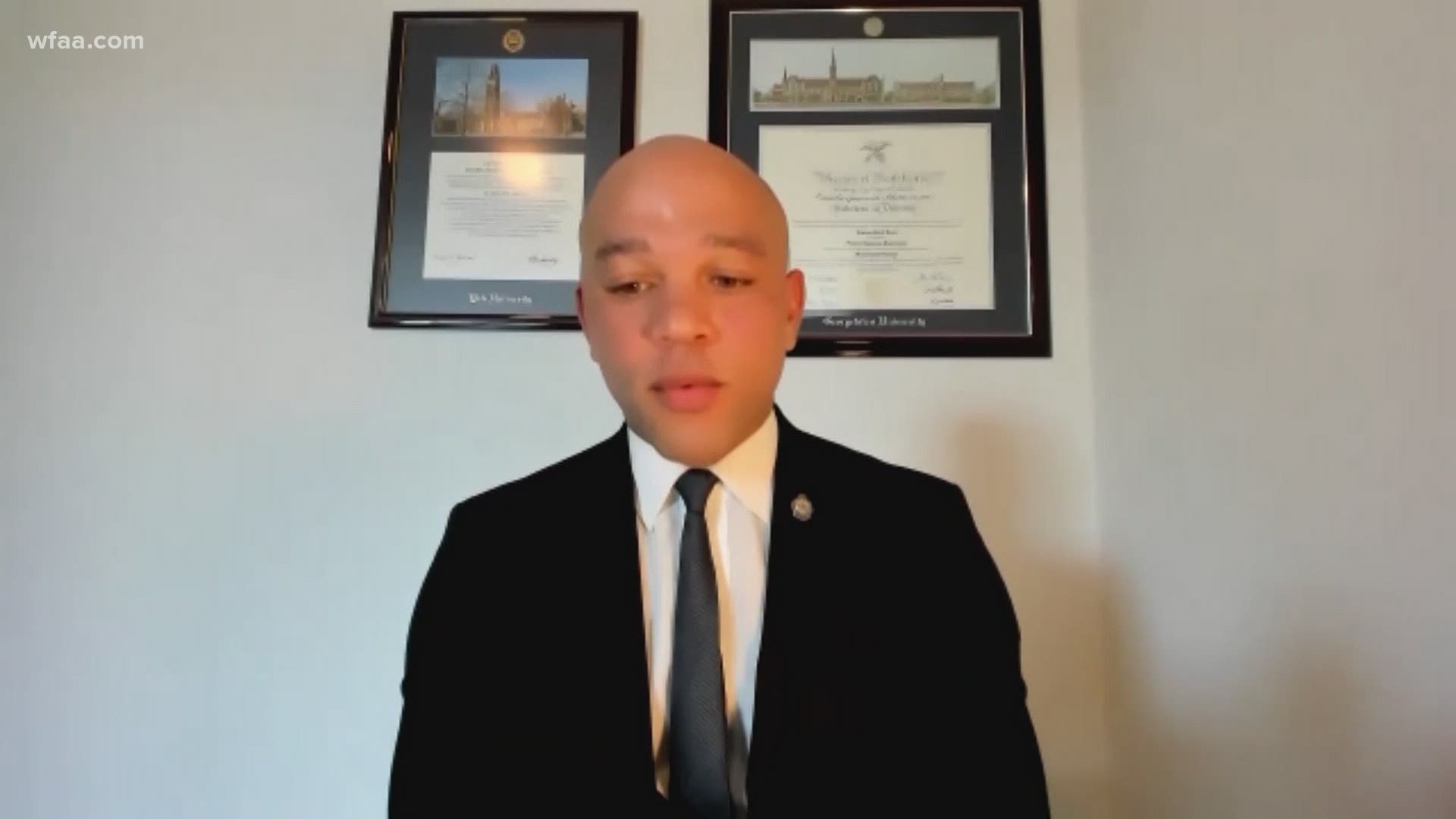FORT WORTH, Texas — The unknowns of COVID-19 are forcing new risks into healthcare every day, including how to treat employees who have had unprotected exposures to COVID-19.
“It’s a really difficult balancing act to make sure that you’re caring for the well-being of your staff while also making sure you have adequate resources to care for the public,” Dr. Stephan Davis, a public health educator at UNTHSC said.
A healthcare worker at Baylor Scott & White emailed WFAA a memo sent to their team reading, “If someone close to you gets COVID, you continue to work until you are symptomatic.”
The worker wrote to WFAA that it put coworkers, families and patients at risk.
“I can absolutely understand their concern,” Davis said. “As a nurse, the last thing I’d want to see is other nurses and healthcare professionals in harm’s way.”
Baylor Scott & White said in an email they're following CDC guidance.
“As the number of COVID-19 cases rise in our communities, in line with recommendations and guidelines from the CDC, we are taking many measures to protect the health and safety of our patients and our team members while mitigating potential staffing shortages,” a spokesperson wrote in an email.
If there are critical staff shortages, CDC guidance allows healthcare workers who have had unprotected exposures to the virus to work if they haven’t had symptoms or tested positive as opposed to quarantining for 14 days, which is the recommendation for other professions.
“I think the CDC is responding to reality that hospitals do have critical staff shortages where we see hotspots of COVID-19,” Davis said.
Baylor Scott & White, along Texas Health Resources and JPS Health confirmed they’re using that policy.
Parkland Hospital, UT Southwestern and Medical City Healthcare didn’t respond to requests for clarification of their policies.
Chief Nim Kidd leads Texas’s Division of Emergency Management and said there are shortages at hospitals in different parts of the state.
“Instead of taking people out of operating for up to two weeks at a time and having them isolate, there is a need to be able to use those healthcare providers as well,” Kidd said.
The issue is the CDC also says 50% of the spread of COVID-19 is coming from people who haven’t had symptoms.
“Yes, there’s risk associated with this but again, we are all learning at the same time” Davis said.
Davis recommends shared governance where both healthcare leaders and frontline workers collaborate to create the best policy.
One concern is the guidance is broad. The hospital groups, Chief Kidd and Dr. Davis all had different interpretations of who exactly was allowed to keep working.
“It is an evolving situation,” Davis said. “We’re learning as we go with coronavirus, so I do think we’ll see policy changes as a result.”
Texas Health Resources explained their policy in an emailed statement saying:
"Texas Health Resources is following current CDC guidance to assess COVID-19 exposure risk and determine health-care worker status based on that information. Factors considered in exposure risk include duration and proximity of contact, provider PPE, and whether or not the individual with COVID was wearing a mask. All of our staff are asked to continuously monitor for symptoms and take their temperatures two times a day. Anyone who has symptoms is required to stay home and is scheduled for testing."
JPS Health provided its guidance:
"For employees who have been exposed, but are asymptomatic we follow a risk chart to determine whether they should be tested/quarantined, etc. High risk exposures are those that would result in testing and quarantine. A high risk exposure is prolonged close contact (within 6 feet for greater than 5 minutes or within 6 feet for ANY length of time during aerosolizing procedures) while not wearing PPE, with a positive patient who was not wearing a face mask. If an employee has a high-risk exposure, we would send them home immediately and schedule them for testing. Once tested, if positive, we would follow the pathway below. If an employee tests positive, they quarantine at home for 10 days including the last 3 days which must be symptom free."

